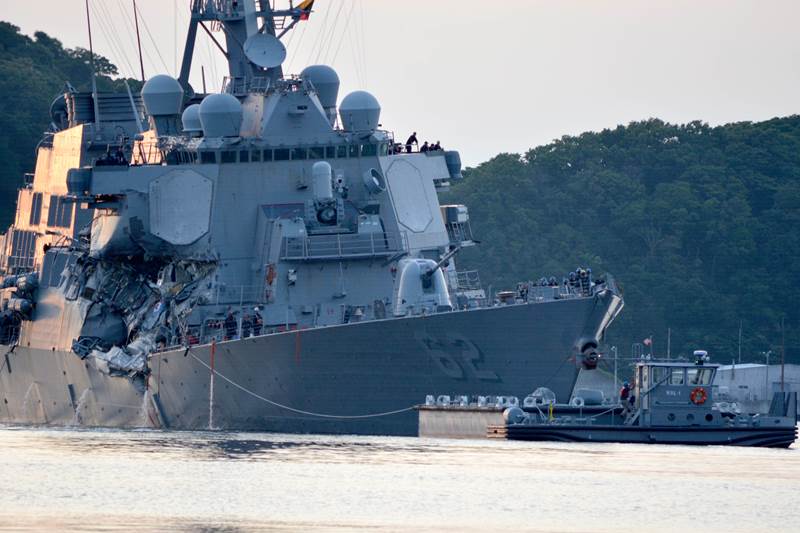US Warship Stayed on Collision Course despite Warning

A U.S. warship struck by a container vessel in Japanese waters failed to respond to warning signals or take evasive action before a collision that killed seven of its crew, according to a report of the incident by the Philippine cargo ship's captain.
Multiple U.S. and Japanese investigations are under way into how the guided missile destroyer USS Fitzgerald and the much larger ACX Crystal container ship collided in clear weather south of Tokyo Bay in the early hours of June 17.
In the first detailed account from one of those directly involved, the cargo ship's captain said the ACX Crystal had signaled with flashing lights after the Fitzgerald "suddenly" steamed on to a course to cross its path.
The container ship steered hard to starboard (right) to avoid the warship, but hit the Fitzgerald 10 minutes later at 1:30 a.m., according to a copy of Captain Ronald Advincula's report to Japanese ship owner Dainichi Investment Corporation that was seen by Reuters.
The collision tore a gash below the Fitzgerald's waterline, killing seven sailors in what was the greatest loss of life on a U.S. Navy vessel since the USS Cole was bombed in Yemen's Aden harbor in 2000.
Those who died were in their berthing compartments, while the Fitzgerald's commander was injured in his cabin, suggesting that no alarm warning of an imminent collision was sounded.


